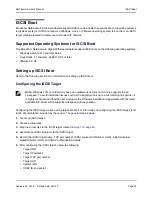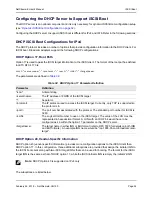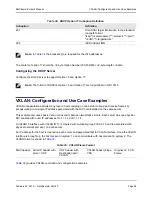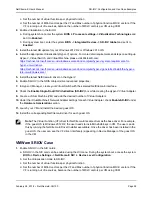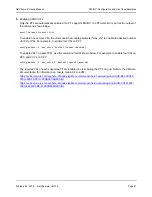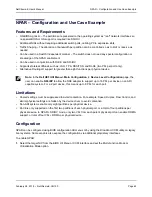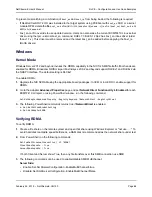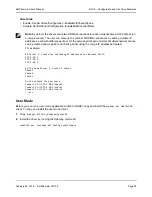
VXLAN: Configuration and Use Case Examples
NetXtreme-E User’s Manual
February 26, 2018 • NetXtreme-E-UG100
Page 56
The content of option 17 should be <2-byte Option Number 201|202|203> <2-byte length> <data>.
Configuring the DHCP Server
Configure the DHCP server to support Option 16 and Option 17.
VXLAN: Configuration and Use Case Examples
VXLAN encapsulation permits many layer 3 hosts residing on one server to send and receive frames by
encapsulating on to single IP address associated with the NIC card installed on the same server.
This example discusses basic VxLan connectivity between two RHEL servers. Each server has one physical
NIC enabled with outer IP address set to 1.1.1.4 and 1.1.1.2.
A VXLAN10 interface with VXLAN ID 10 is created with multicast group 239.0.0.10 and is associated with
physical network port pxp1 on each server.
An IP address for the host is created on each server and associated that to VXLAN interface. Once the VXLAN
interface is brought up, the host present in system 1 can communicate with host present in system 2. The
VLXAN format is shown in
.
provides VXLAN command and configuration examples.
Table 34: DHCP Option 17 Suboption Definition
Suboption
Definition
201
First iSCSI target information in the standard
root path format
"iscsi:"[<servername>]":"<protocol>":"<port>":
"<LUN>":"<targetname>"
203
iSCSI initiator IQN
Note:
, the brackets [ ] are required for the IPv6 addresses.
Note:
The format of DHCPv6 Option 16 and Option 17 are fully defined in RFC 3315.
Table 35: VXLAN Frame Format
MAC header
Outer IP header with
proto = UDP
UDP header with
Destination port=
VXLAN
VXLAN header (Flags,
VNI)
Original L2
Frame
FCS








